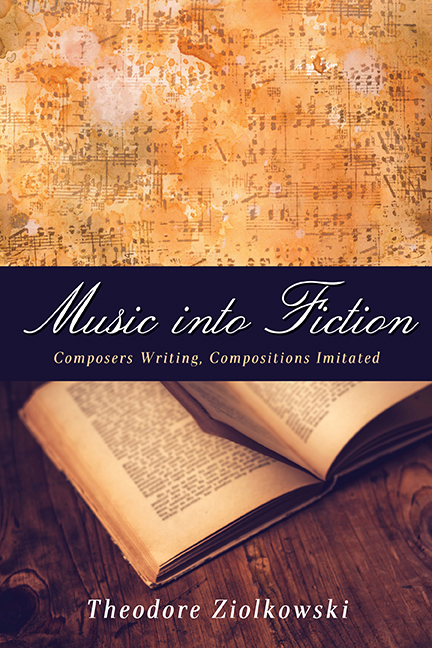Second Movement: Compositions Imitated
Published online by Cambridge University Press: 09 May 2017
Summary
Writers have sought in countless ways to reproduce musical effects, and the critics have been no less assiduous in devising ever new methods of analysis. Werner Wolf has proposed persuasively that the presence of music in literature can be expressed in basically two ways: through “telling” or “Thematisierung” (evocative titles, commentaries on musical works, and so on) and through “showing” or “Inszenierung” (word music, structural analogies, and so on).
With regard to “telling,” novelists from E. T. A. Hoffmann to Thomas Mann have created fictions around the figure of the musician. Tolstoy entitled one of his stories The Kreutzer Sonata. And we have encountered many examples of commentary on musical works, ranging from Schumann's Eusebius-Florestan to Burgess's Anthony-Burgess. As for “showing,” poets have aspired through rhyme and rhythm to “musicality” in their verse, an enterprise acknowledged by T. S. Eliot in his W. P. Ker Memorial Lecture on The Music of Poetry. Writers like Aldous Huxley in his Point Counter Point have experimented with such techniques as leitmotif and counterpoint.
The critics, in turn, have become ever more ingenious, looking well beyond musicology, for instance, to the myth analysis of Claude Lévi-Strauss or Mikhail Bakhtin's understanding of “carneval” as keys to the “microstructural nuances” of the musical phenomena of literary works.
My approach here is more pragmatic and takes as its texts solely prose fiction of different lengths. Chapter 6 looks at several specific musical forms—fugue, chaconne, passacaglia, rondo, suite, sonata, symphony— and explores the ways in which they have been adapted by writers for their fictional purposes. It should be stressed that these are musical forms and not simply musical techniques such as counterpoint or leitmotif, which may be used in various forms. As distinct musical forms they are far more specific and established than vaguer impressions of “musicality.”
- Type
- Chapter
- Information
- Music into FictionComposers Writing, Compositions Imitated, pp. 131 - 132Publisher: Boydell & BrewerPrint publication year: 2017



